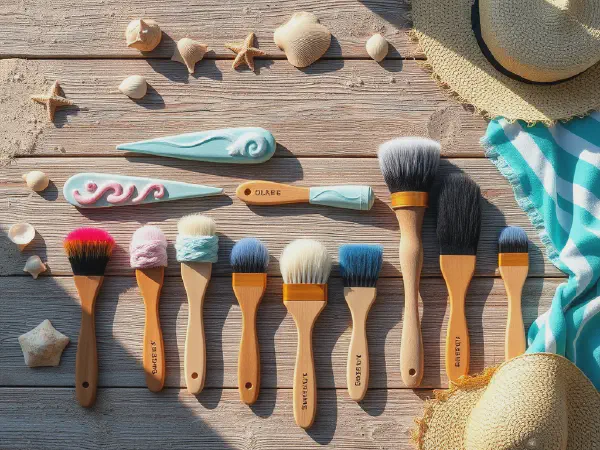The Ultimate Guide to Finding the Best Wave Brush

The Ultimate Guide to Wave Brushes
Wave brushes are an essential tool for anyone looking to create and maintain waves in their hair. Whether you have natural waves or are trying to create them, a wave brush can help you achieve the desired look. In this comprehensive guide, we will explore everything you need to know about wave brushes, including the different types, how to choose the best brush, the benefits of using one, wave brush techniques and tips, reviews of the best wave brushes on the market, and care and maintenance tips.
When it comes to wave brushes, there are several factors to consider. The type of bristles, handle design, and brush material all play a role in the effectiveness of the brush. Understanding these factors will help you choose the best wave brush for your hair type and desired results.
Types of Wave Brushes
Wave brushes come in various types, each with its own unique features. One of the main differences between wave brushes is the type of bristles they have. Some wave brushes have soft bristles, which are ideal for people with sensitive scalps or fine hair. Other wave brushes have medium or firm bristles, which are better suited for thick or coarse hair.
Another factor to consider when choosing a wave brush is the handle design. Wave brushes typically have either a curved or straight handle. The curved handle design allows for a more ergonomic grip, making it easier to brush your hair in a circular motion to create waves. On the other hand, straight handle wave brushes are more traditional and provide a firm grip.
Different Bristle Types
Soft bristles: Soft bristle wave brushes are ideal for people with sensitive scalps or fine hair. They provide a gentle brushing experience and help prevent scalp irritation.
Medium bristles: Medium bristle wave brushes are suitable for most hair types. They offer a balance between soft and firm bristles, providing effective wave formation without causing discomfort.
Discover the ultimate grooming tool, Best Wave Brush, for perfect waves every time.
Firm bristles: Firm bristle wave brushes are best for thick or coarse hair. They offer maximum control and can create more defined waves. However, they may not be suitable for those with sensitive scalps.
How to Choose the Best Wave Brush
Identify your hair type: Understanding your hair type is crucial when choosing a wave brush. Consider the thickness, texture, and sensitivity of your hair to determine the appropriate bristle firmness and brush material.
Consider the bristle firmness: As mentioned earlier, soft bristles are suitable for sensitive scalps or fine hair, while firm bristles are better for thick or coarse hair. Medium bristles are a good choice for most hair types.
Handle grip and ergonomics: The handle design of a wave brush can greatly impact your brushing experience. Choose a handle that feels comfortable in your hand and allows for easy maneuverability.
Benefits of Using a Wave Brush
Promotes hair growth: Regular brushing with a wave brush promotes blood circulation to the scalp, which in turn stimulates hair growth. The brushing action also helps distribute natural oils along the hair shaft, keeping the hair and scalp healthy.
Defines waves and curls: Wave brushes are specifically designed to enhance and define waves and curls. They help train the hair to form waves and create a more uniform and polished look.
Enhances hair texture: Using a wave brush adds volume and texture to the hair. It helps create a fuller appearance and can make hair appear thicker and more voluminous.
Wave Brush Techniques and Tips
Prepping the hair: Before using a wave brush, it's important to prep the hair by washing and conditioning it. Apply a small amount of wave-enhancing product or styling gel to damp hair to help define the waves.
Brushing techniques: To create waves, brush your hair in a circular motion, starting from the roots and working your way down to the ends. Apply gentle pressure and avoid brushing too aggressively to prevent damage to the hair and scalp.
Maintenance and cleaning tips: To keep your wave brush in good condition, remove any hair strands caught in the bristles after each use. Clean the brush regularly by soaking it in warm water with a mild shampoo or brush cleaner. Avoid immersing the handle in water to prevent damage.
Reviews of the Best Wave Brushes
Top-rated wave brushes on the market: There are several wave brushes available on the market, each with its own set of features. Some popular options include the Torino Pro Wave Brush, Annie Wave Brushes, and Crown Quality Products Wave Brush.
Pros and cons of each brush: The Torino Pro Wave Brush is known for its high-quality bristles and ergonomic handle design. The Annie Wave Brushes offer a range of bristle firmness options and are affordable. Crown Quality Products Wave Brush is praised for its durability and effectiveness in creating waves.
Real customer reviews: Many customers have reported great results with these wave brushes, noting an improvement in wave formation and overall hair texture. Some users have mentioned that consistent use of a wave brush has helped them achieve the desired wave pattern faster.
Wave Brush Care and Maintenance
Cleaning the brush: To clean your wave brush, remove any hair strands caught in the bristles. Fill a sink or bowl with warm water and add a mild shampoo or brush cleaner. Gently scrub the bristles using a soft brush or toothbrush. Rinse thoroughly and leave the brush to air dry.
Storing the brush: Store your wave brush in a clean and dry place to prevent dirt and dust accumulation. Avoid placing heavy objects on top of the brush or bending the bristles.
Replacing the brush: Wave brushes should be replaced when the bristles start to wear down or become loose. Depending on the frequency of use and the quality of the brush, it may need to be replaced every few months.
